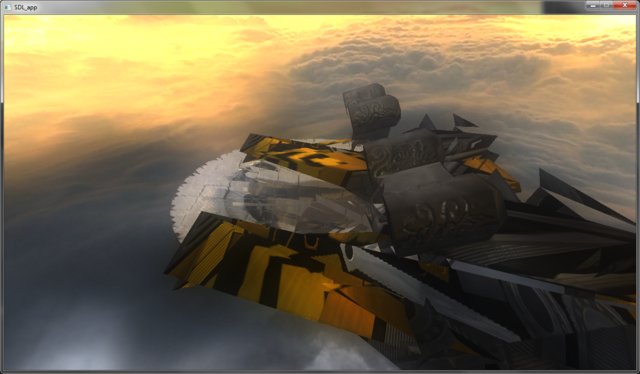While playing with the engine I noticed the steamtank looked possibly better without the dark edges so I took them off. I may put them back later though. We'll probably play around here quite a bit.
So here I was at 20 fps with a cool Steamtank. I decided to add another tank and boom, frame rate was down at 10 fps. Huh? For other computers this didn't affect the frame rate at all. Yummy.
At the moment I was using Vertex Buffer Objects of size of one mesh each, where by mesh I mean a part of model that consists of a single material. I have read that the VBO size should be kept between around half and two megabytes. Mine were closer to few dozen kilos, so maybe this was a source of slowness? I went and combined the VBOs.
Here's a screenshot I took while the process wasn't quite ready yet.

Got it ready and, oh the speed increase. Frame rate had dropped from 10 to 5 per second. Software fallback? Too large VBOs? Pfft.
No software fallback for me, please
The size of my vertex information was 76 bytes per vertex. It had vertex position, vertex normal, vertex tangent, four joint IDs and four joint weights for skeletal animation. It's said that this number should be a multiple of 32 bytes for best performance. Our model was using at most two vertex weights so we thought three vertex weights should be enough, saving 8 bytes. As the sum of the vertex weights has to be one, I could calculate the third one from the remaining two in the vertex shader. I had reached the goal of 64 bytes.
No significant performance increase.
Then something caught my eye. Everything else in the vertex information was floating point numbers but the joint numbers were integers... Like they naturally should be. I vaguely remembered that for optimal performance only floats should be used here, but at the time I read this I didn't pay too much attention to it. I tried changing them to floats and boom, the program was running at 45 frames per second. Huh!
Apparently the graphics hardware didn't support integer parameters in the vertex structure so it resorted to software fallback instead... Vertex shaders in software, no thanks.
Here's a video capture of the engine running at 40 fps on HD 4650 Mobility with resolution 1280x720.
Oh and by the way, toggling larger VBOs increases the frame rate by around one frame per second.
No comments:
Post a Comment